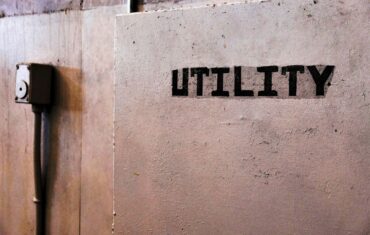Lack of inventory and the opportunity to live anywhere in a work-from-home environment has more homebuyers thinking about building their home from scratch. It’s an appealing option since it usually means creating a space more attuned to your tastes from the start. In fact, Realtor.com recently reported that one-third of homes for sale are new construction.
Still, a lot of work goes into building a home. It requires materials and labor, costs that are on the rise as construction companies grapple with supply chain issues. The Associated General Contractors of America released a new study showing that prices for materials escalated 20% in 2021.
Like a traditional mortgage for a pre-existing home, consumers can apply for a construction loan to build or remodel a property. However, financing the construction can be a bit trickier. A disagreement about payments with a contractor or subcontractor could result in a mechanic’s lien and threaten to put buyers into a financial bind with no finished house if the proper steps aren’t taken to protect their interests.
Another alternative is that current homeowners may be considering home renovations to avoid moving or building.
Taking out a construction loan is more complicated and riskier than a traditional loan. Here’s a breakdown of the process and mistakes for consumers, attorneys, and title companies to avoid.
Construction Loans and Mechanic’s Liens
In a traditional mortgage loan, the property acts as collateral to finance the purchase. Lenders have the option to foreclose on the property should the borrower default on the terms of the loan. Since no house is built yet when financing a construction loan, the bank takes a different approach.
How Does a Construction Loan Work?
Usually, a mortgage loan is for a 30-year or 15-year period, but a construction loan is short-term (somewhere between 12-18 months). During this period, the lender requires that the property be finished and a certificate of occupancy issued. Interest rates are also variable, meaning they can fluctuate throughout the loan. The overall interest rate is usually one percent higher than traditional mortgage rates.
The construction loan will typically cover big-ticket items such as:
- The land
- Contractor labor
- Building supplies
- Permits
The loan is paid out in installments based on certain construction milestones. Borrowers can draw on the loan money as the project progresses into each phase to cover the anticipated costs. After the lender has inspected the completed work, the builder is paid from a draw on the loan.
If the builders involved in the project complete each stage as expected, the borrower may have the option to convert it into a permanent mortgage loan with either a fixed or adjustable-rate and the usual 15- or 30- year loan term.
However, if a dispute arises between the borrower, lender, or the builder during the project, as it did in the case of Richard Johnson Esq. v. U.S. Title Agency Inc., a mechanic’s lien can jeopardize the financing.
Builders Have a Right to Place Liens for Unpaid Work or Supplies
When a service provider isn’t paid according to the terms of a contract with a client and demand letters are ignored, professionals will often file a lawsuit. For contractors and subcontractors, they have an option to file a mechanic’s lien if they aren’t paid for their labor or materials. The lien must either be paid to be removed or result in a foreclosure sale of the property.
Even if a homeowner doesn’t contract directly with the laborer, the subcontractor working with the main contractor still has the right to place a lien on the property they worked on. The philosophy behind these liens is that since these workers contributed to the improved value of the property, they now have an interest in the property.
Borrower Sues Title Company Over Construction Liens
In 2008, Richard Johnson decided to take out a construction loan of $815,581 for major renovations on his home in Bentleyville, Ohio. He hired Berns Custom Homes as the general contractor and obtained the financing from KeyBank National Association.
Before the loan was finalized and the work began, KeyBank provided written closing instructions to the title company, entitled “Construction-to-Permanent Closing Instructions.” Johnson’s attorney issued verbal closing instructions to the title company, requesting compliance with the lender’s closing instructions and the same protections against mechanic’s liens.
The bank’s policy included a construction rider that no lien could take priority over the mortgage, including a mechanic or construction lien. Johnson received a Cover Letter from the title company indemnifying him for any financial loss from listed conditions, which included the title insurance company’s failure to “comply with any applicable written closing instructions when agreed to by the Licensed Agent.”
Unfortunately, the title company failed to have the contractor sign the Consent Clause to subordinate any mechanic’s liens to the mortgage.
A Disagreement Creates Liens
In 2010, a clash erupted between Berns and Johnson. Ultimately, Johnson fired the contractor, but Berns and four subcontractors filed mechanic’s liens totaling $297,191.
When Johnson approached the lender for a draw to satisfy the liens, he was denied. According to the court documents, he discovered at that time that:
- The lender’s policy was issued after a notice of the liens was filed (a claim that the title company denies).
- The Coverage policy that Johnson bought was never received
- The Consent Clause was never executed by the contractor
- Neither the owner’s policy nor the lender’s policy contained a future advance endorsement or exclusion protecting against the priority of the mechanics’ liens
- The use of an open-end form mortgage instead of the mortgage used in this transaction would have assured priority for future advances.
Johnson filed suit against the title company, asserting six counts, including breach of contract, specific performance, and injunctive relief requiring that appellees extinguish the liens, provide for the subordination of the liens or issue a new policy insuring over any after-file liens, and others.
Initially, the court sided with the title company, citing that Johnson created the lien problem and failed to provide written closing instructions. The liens remained and the lender refused to release further draws.
During a second appeal, the court noted that the terms of the closing protection coverage issued to KeyBank were identical to those that covered Johnson. Due to genuine issues of material fact, the appellate court reversed and remanded the case to the trial court.
The trial court didn’t rule in Johnson’s favor, but he claimed that the court proceedings were mismanaged and “displayed a deep-seated favoritism or antagonism that would make fair judgment impossible.” The case eventually reached the Ohio Supreme Court in 2020, where each of Johnson’s six assignments of error was overruled and the judgment affirmed.
More Construction Disputes Expected
One expert predicts more construction-related litigation and mechanic’s liens since the pandemic continues to disrupt supply chains and delay projects. Such factors are likely to heighten tensions between builders, lenders, and borrowers looking to finish construction on time and on budget.
Construction Loan Mistakes to Avoid
Consumers considering a construction loan should learn from the Johnson case, and ensure their attorneys do the following:
- Never rely on verbal agreements
- Ensure the coverage policy is received and reviewed
- Add a construction rider to the mortgage so that no other lien can take priority
- Ensure a Consent Clause is properly executed to subordinate any mechanic’s liens
- Consider a lien waiver when appropriate (usually, after labor and materials are furnished but before payment is received)
Related Reading: How to Avoid a $27K Mechanic’s Lien
Although the title company involved in the Johnson case ultimately prevailed in court, performing the original request would have, in part, prevented years of litigation. Title work isn’t easy, and one mistake can lead to lawsuits that don’t result in favorable outcomes.
In our latest State of the Title Industry report, we explore what it’s like working in the title industry, how agents and attorneys overcome challenges, why they outsource certain aspects of title work, and more.
Download your copy of the State of the Title Industry Report to learn more.










